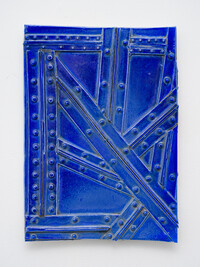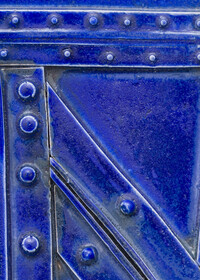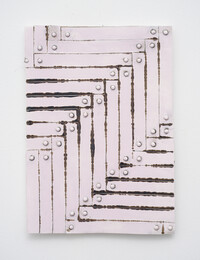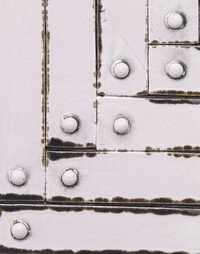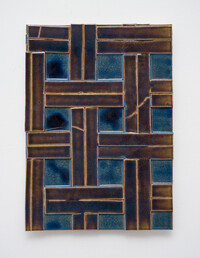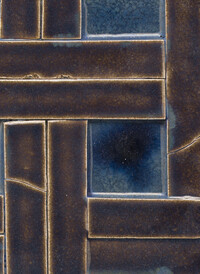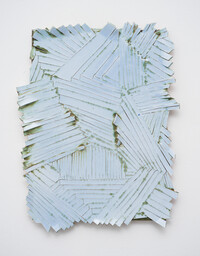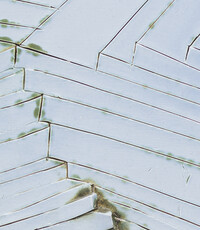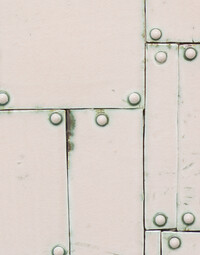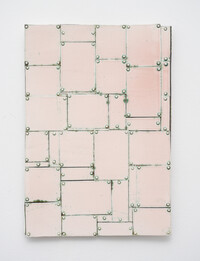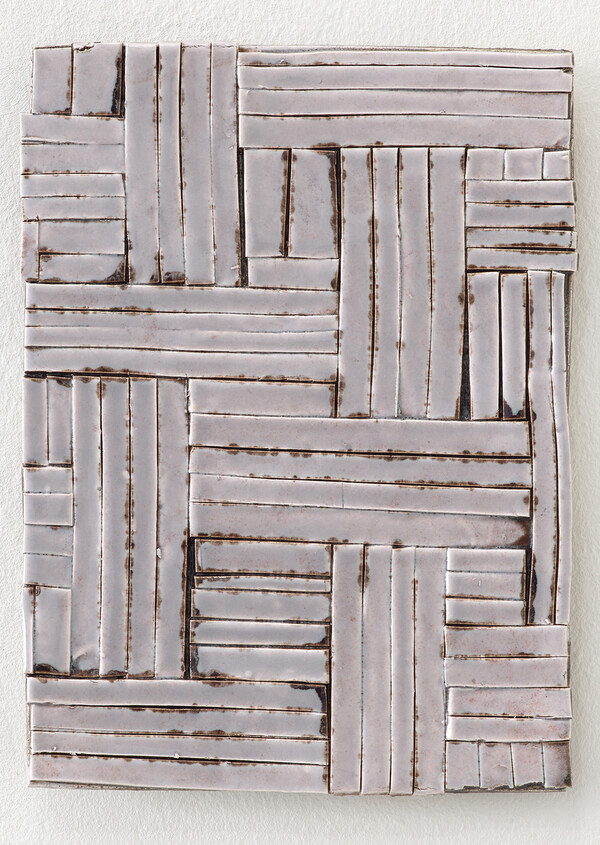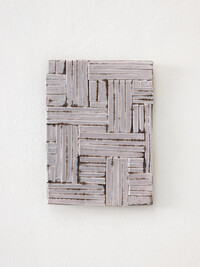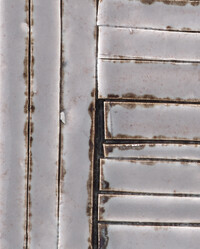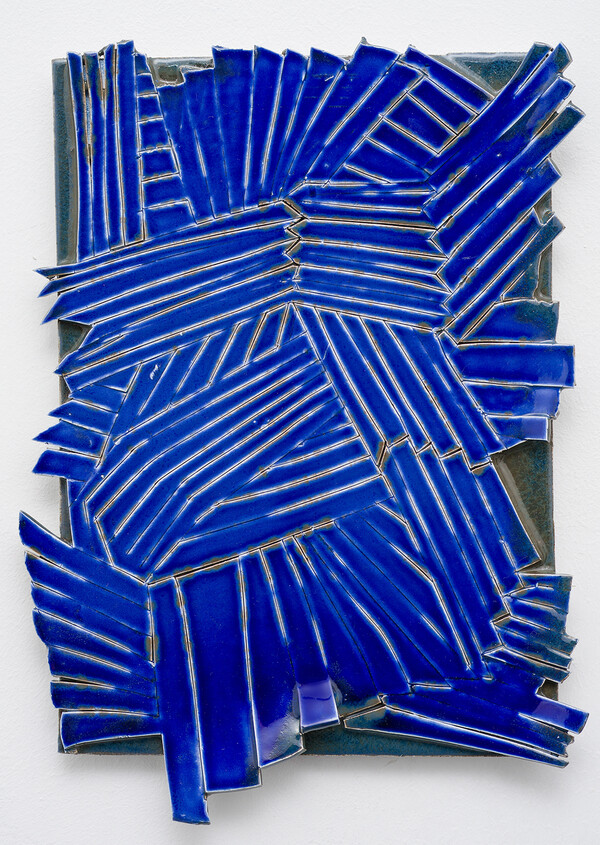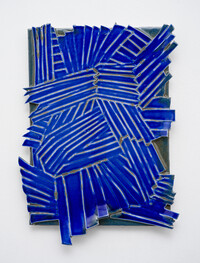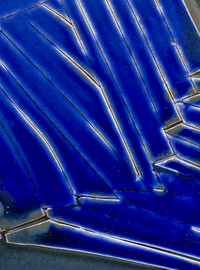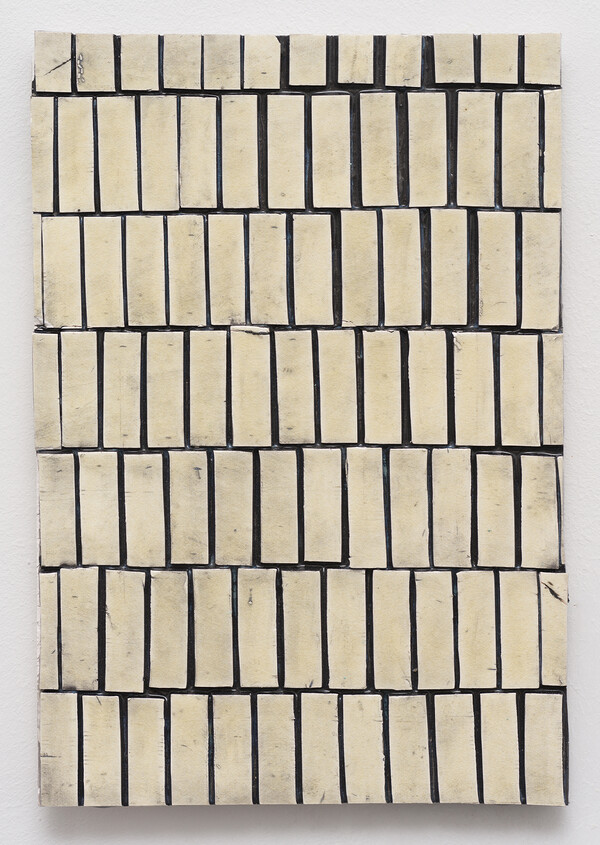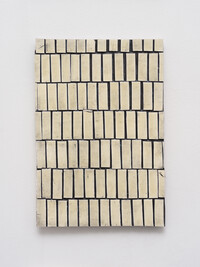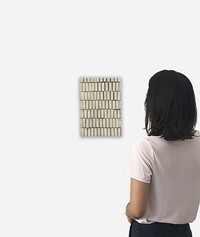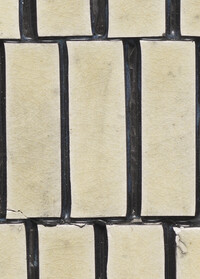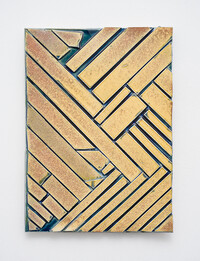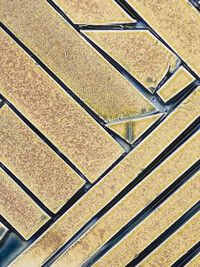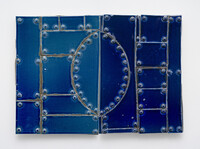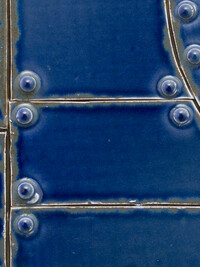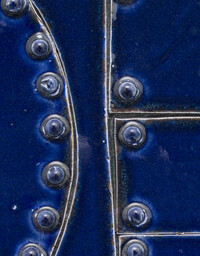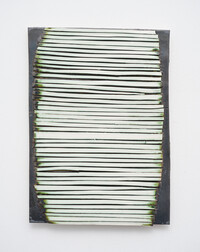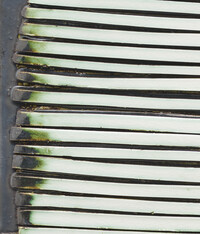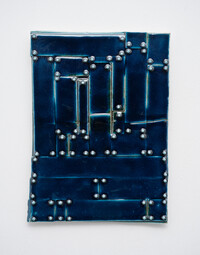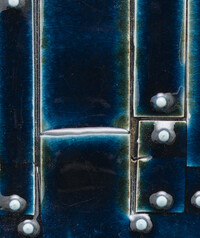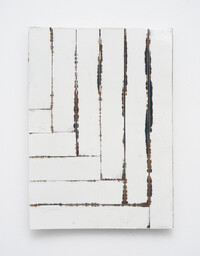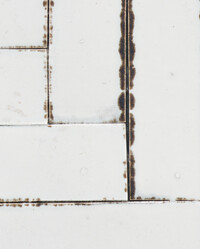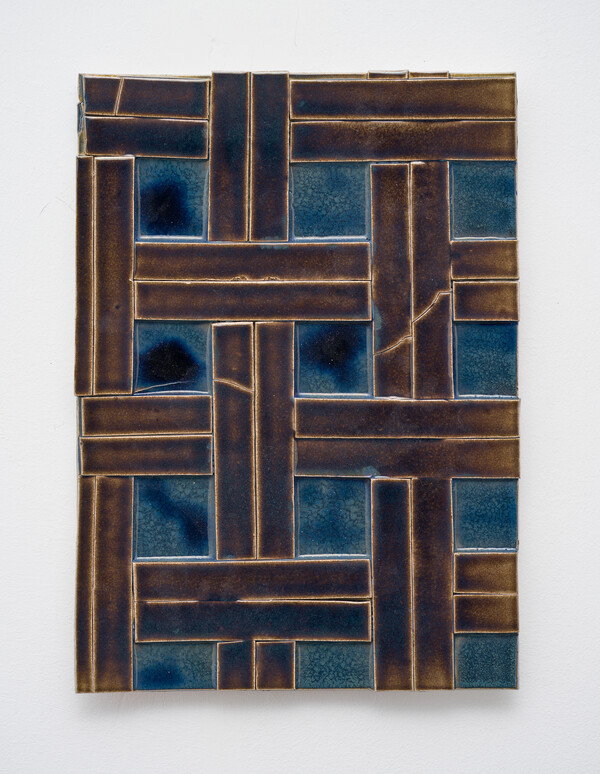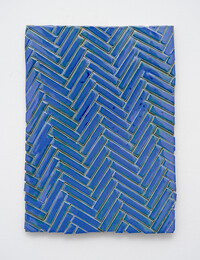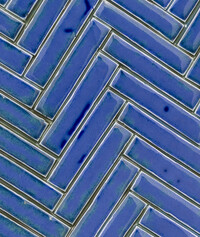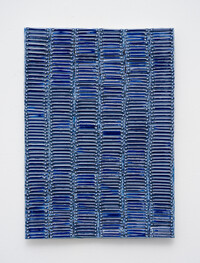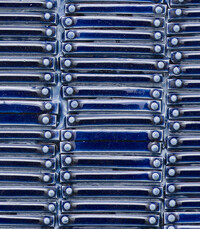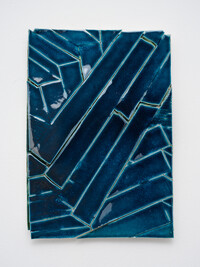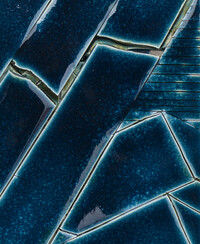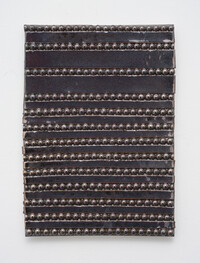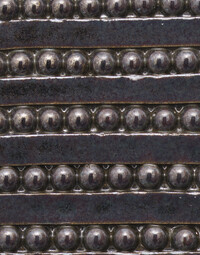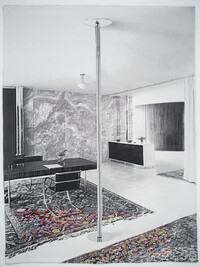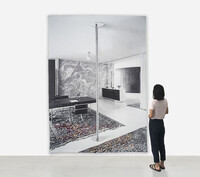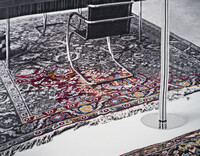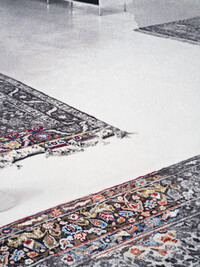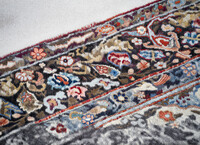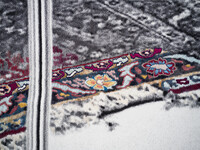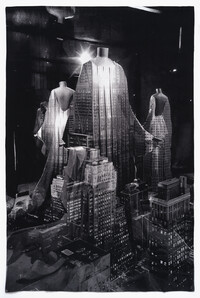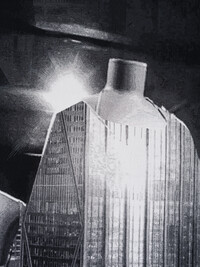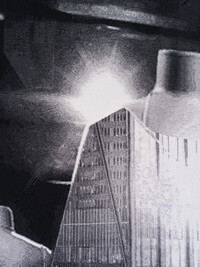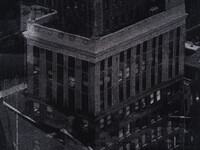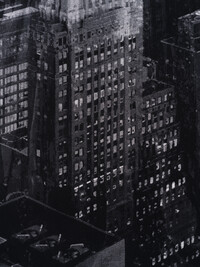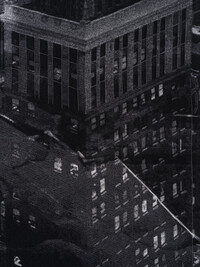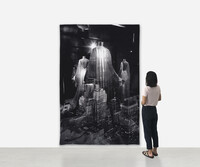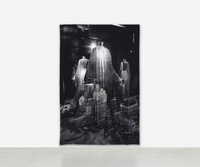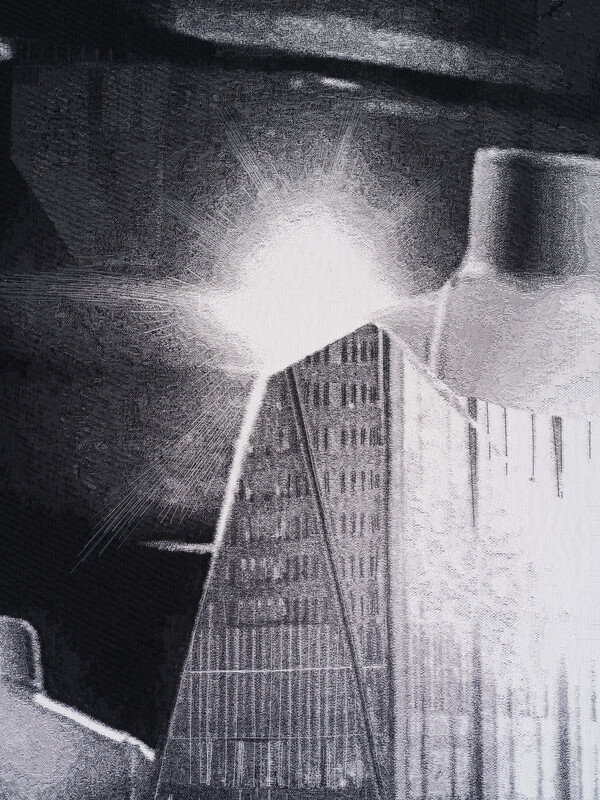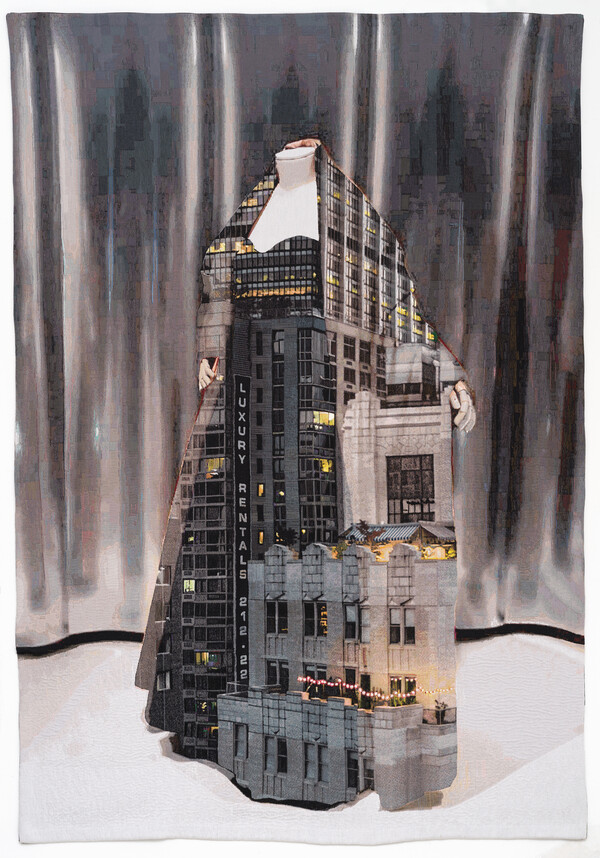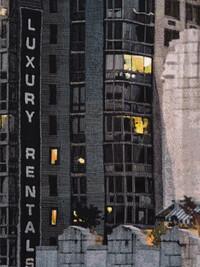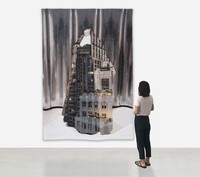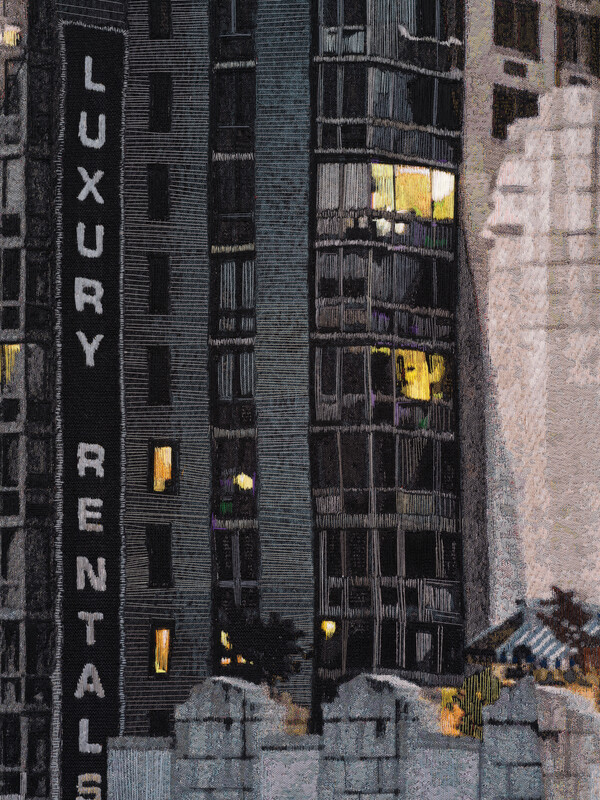My Background is in painting. You could say that painting is my mother tongue. But at some point over time I have become more interested what a surface can tell you.
Shannon Bool
The notion of painting in reference to her Ceramic Paintings and Tapestries
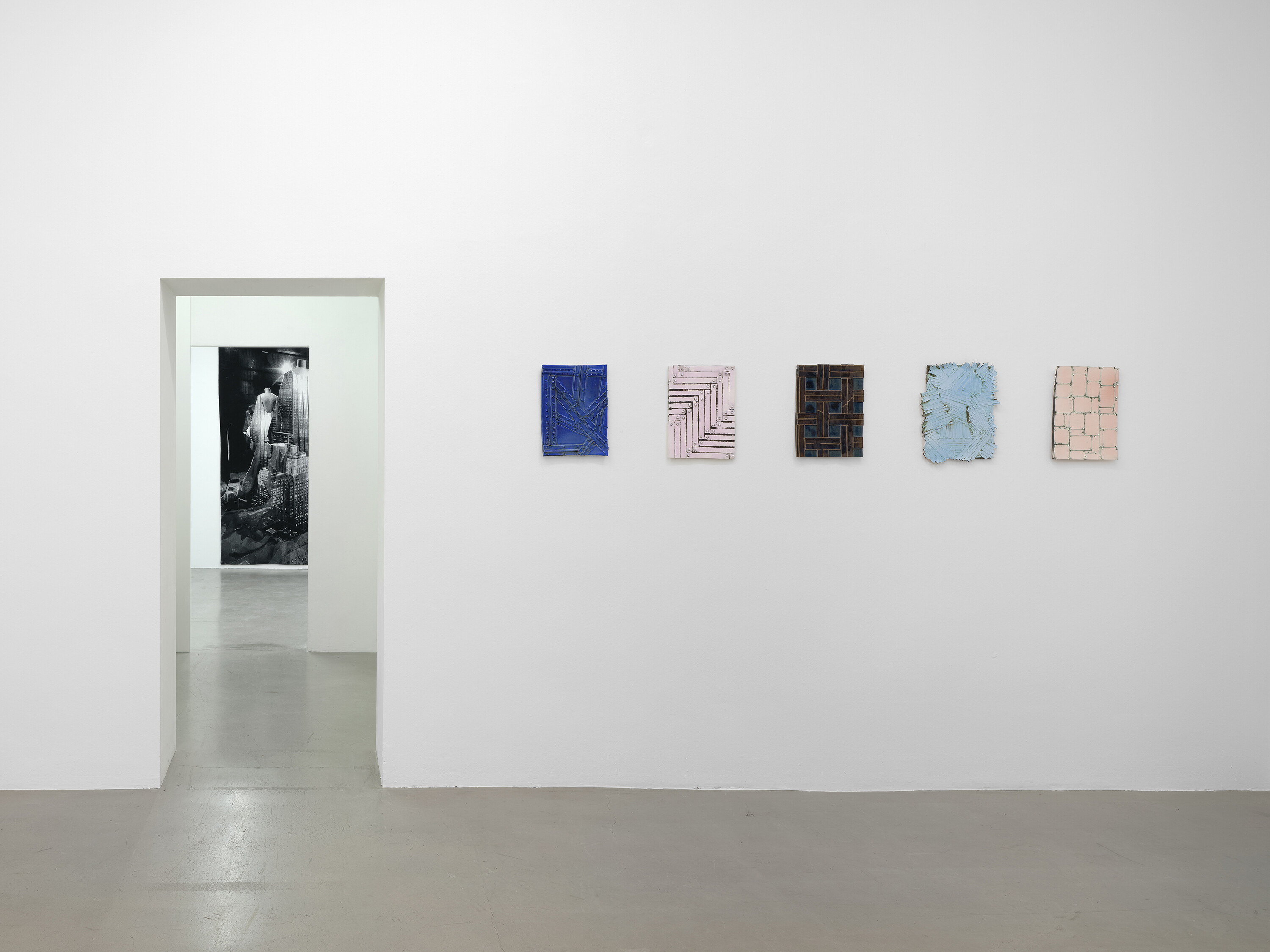
That’s how the ceramic paintings were born of basic technology in my studio, to have a rolling machine, a “Walzer” and to have a few hundred glaze recipes of different colours which I found interesting, which weren’t the normal colours. For every Ceramic painting I use a ruler. So every painting uses a ruler to cut forms. I don’t generally work with curves. I like the language of lines (…) The ideas of building space with repetitive forms which are quite structured. (…) They work on a level of the grid, being activated on the field of vision but also activated in the body of the viewer.
That’s really about the lines that are in it, and the composition. And that’s where it goes more into a serious attempt to be something like painting, and less into an object which has a condition of being a model or representing something else.
Shannon Bool
Peppermint Aufguss, 2025
Glazed Porcelain
25,4 × 19 cm
Shannon Bool
Indigo Skein, 2025
Glazed Porcelain
28 × 20 cm
Shannon Bool
Yellow Bricks, 2024
Glazed Porcelain
27 × 18 cm
They are porcelain, so the porcelain allows a different level of the color to come through because it’s a white color. But they are not burned at the temperate you need for porcelain to be translucent because the glazes wouldn’t be as colorful. So there’s just a lot of decisions made in making them, that become more, kind of painting decisions, a painter sensibility.
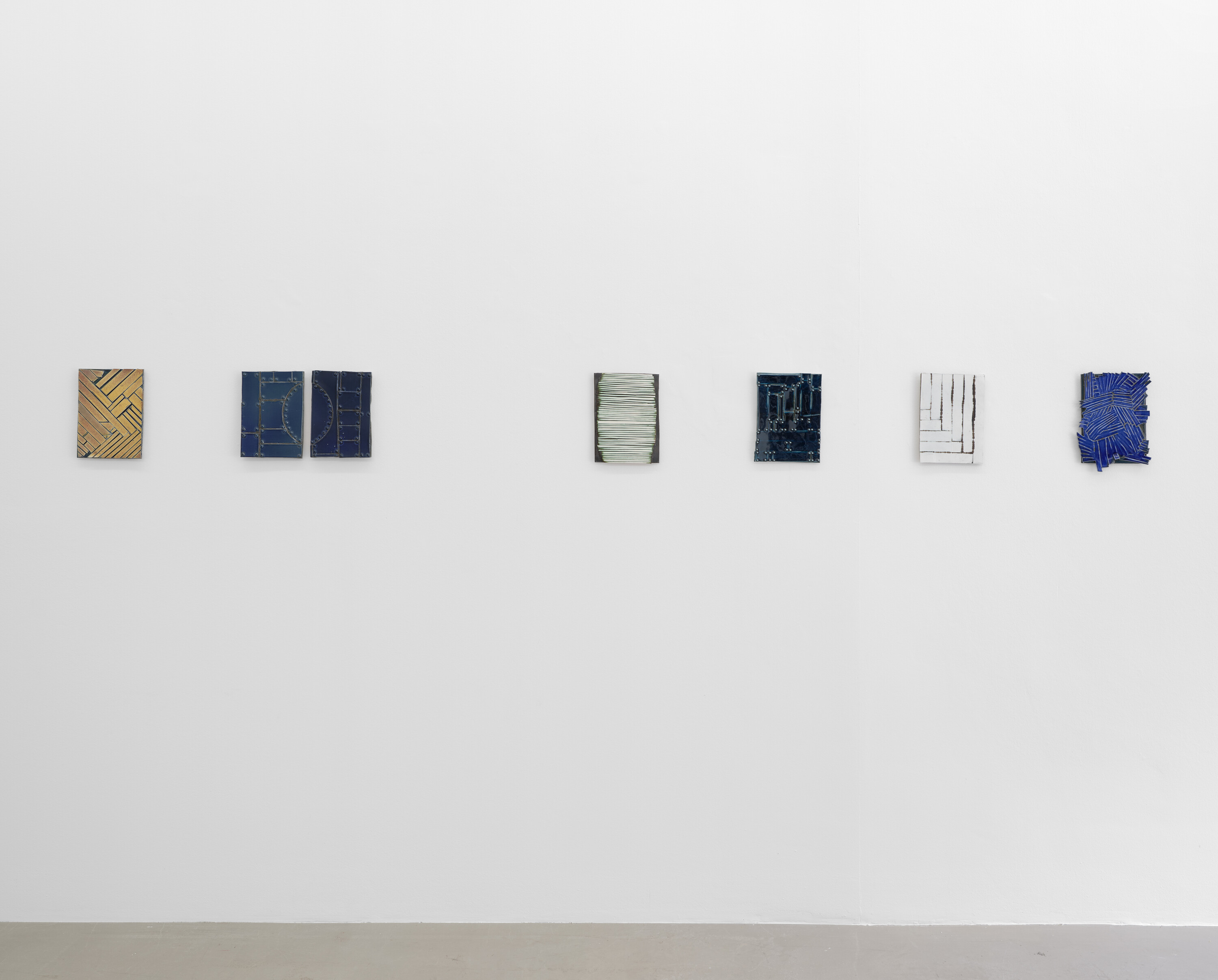
Shannon Bool
Prague Chair, 2025
Glazed porcelain
36 × 25 cm
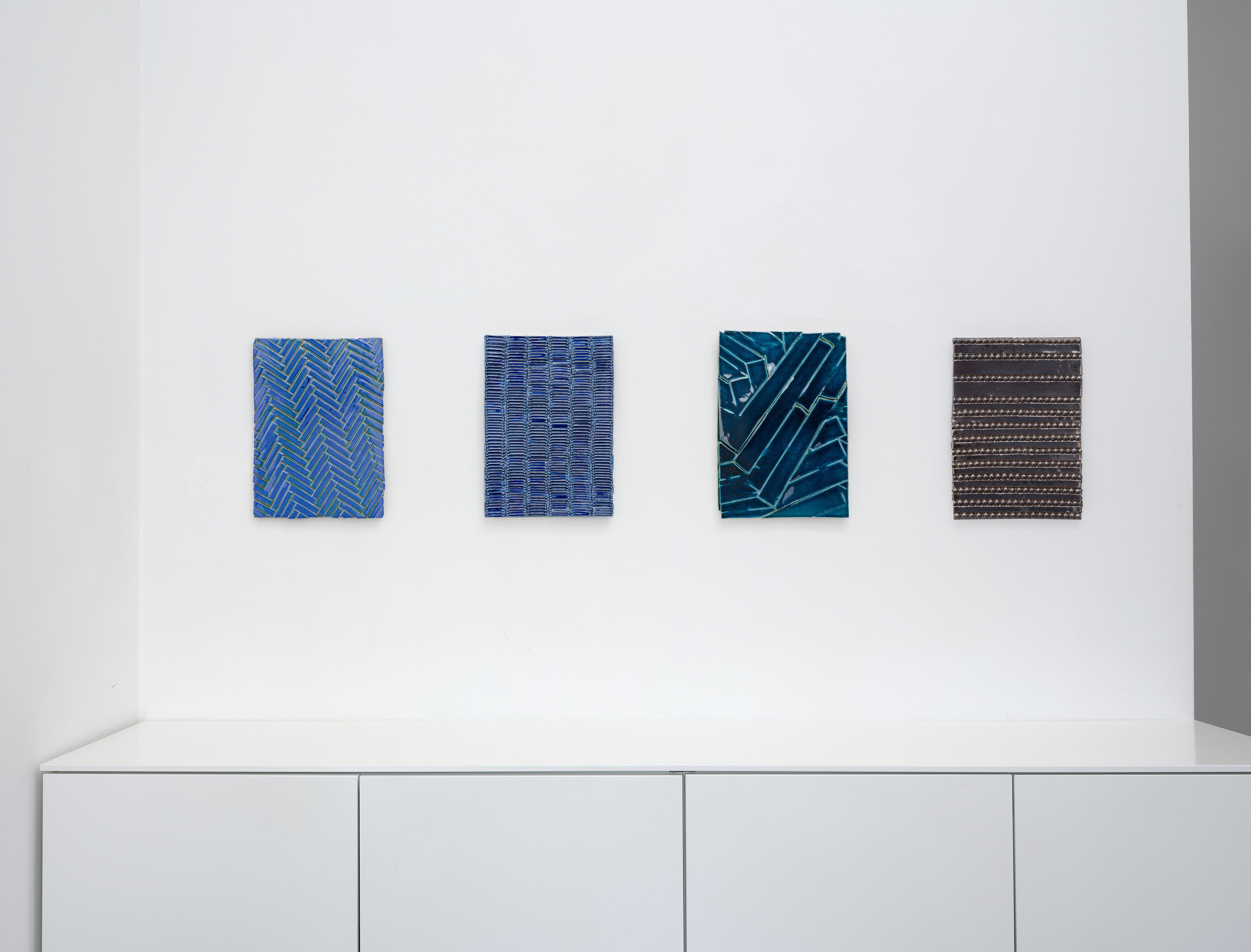
I would say that the jacquard tapestries are connected to painting in the fact that they make a picture.
(…) I think it’s this idea of painting having a real space which is negotiated through paint.
“I” translates an image of Mies Van der Rohe’s Villa Tugendhat from computer to loom, literally softening and destabilizing Mies’ utopian and austere modernist vision. A collaged stripper pole replaces one of the metal columns, suggesting the infiltration of a female body into the space. The Persian carpet, original to Mies’ design, is hand embroidered in colourful threads.
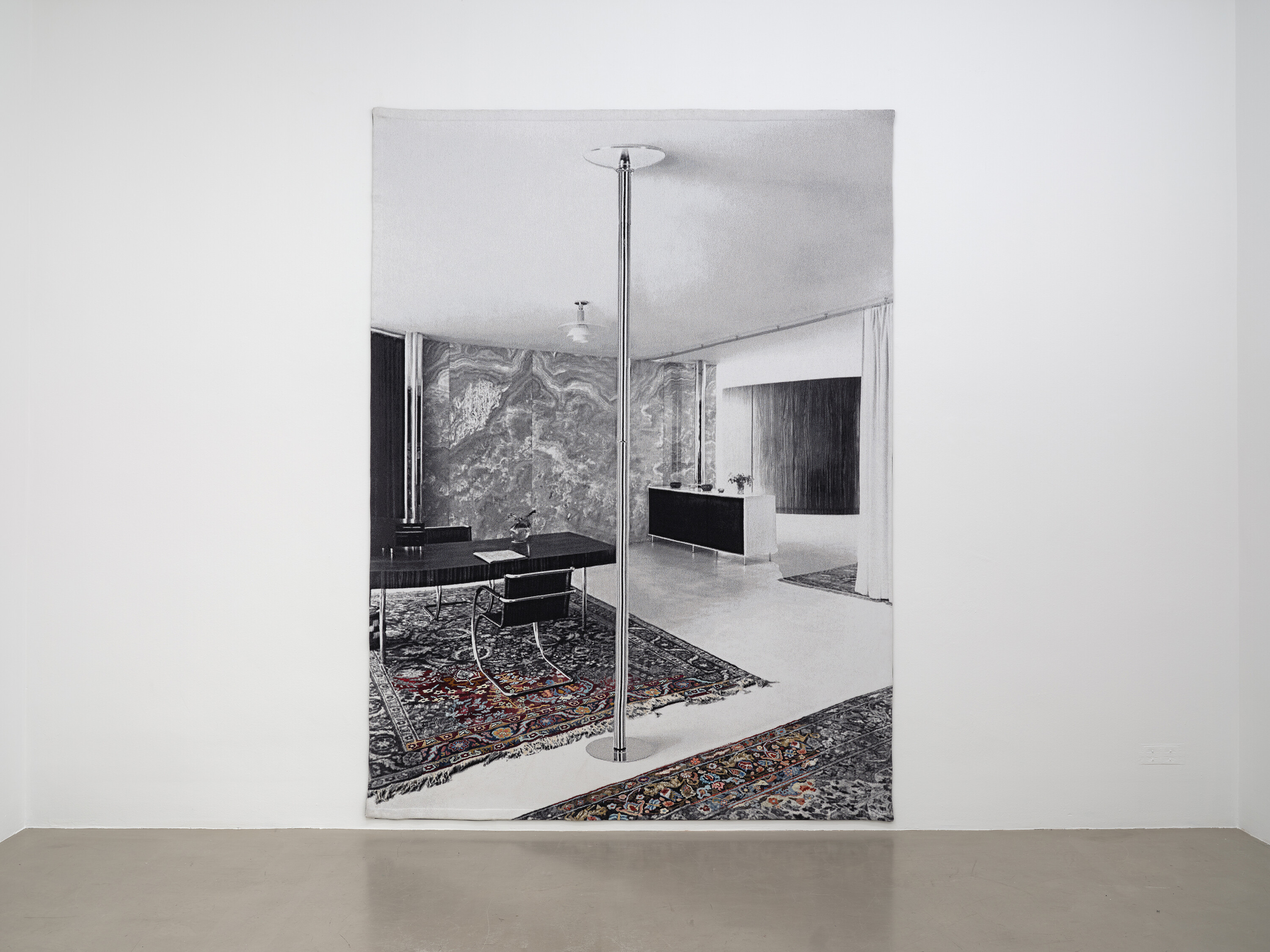
I additionally use hand embroidery in really long processes, as another layer. And this layer is very connected to painting. But it’s also connected to a gendered form of painting. Or a form of painting that is very slow. Hand work, something that has a lot to do with labor. And so, all of these things to me, they build complexities in the idea of how do we look at a picture.
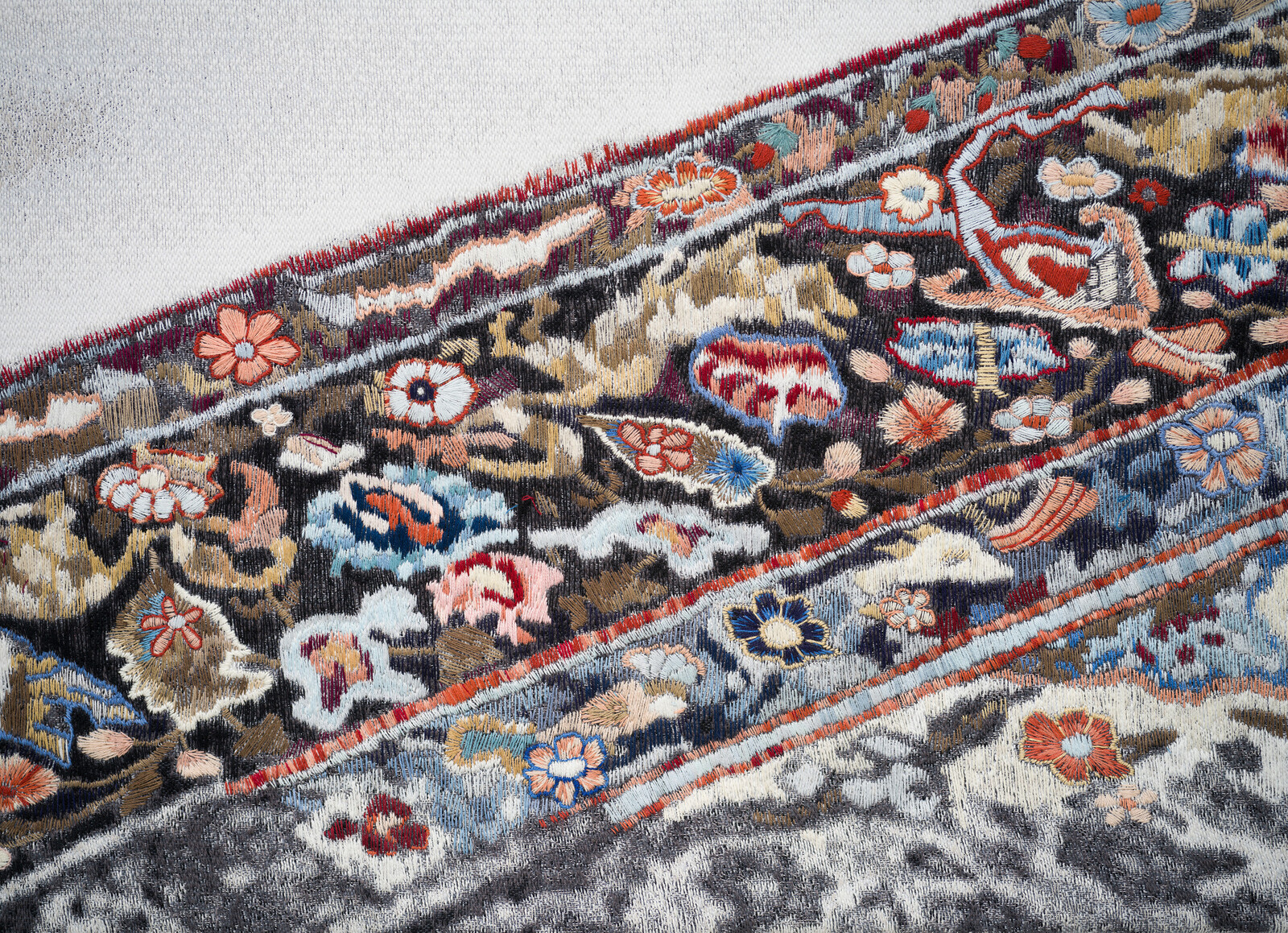
"Magnificent Borderline" is the fifth work of Shannon Bool's "Borderline" series, which she began in 2020. The work creates a fascinating dialogue between real and illusionistic architecture, body and space. The motif was digitally generated on the computer and then programmed for a Hi-Tech Jacquard loom, which combines low and high reliefs. Additionally, the artist embellishes the work with hand embroidery in the studio. The digital collage juxtaposes a photograph of Jeanne Lanvin’s Fashion House retrospective exhibition in 2015 at the Palais Galliera, highlighting its 125 year history, in combination with a recent rendering from Foster & Partners’ new Chase Morgen building in Manhattan, scheduled to be finished in 2025. The digital collage constructs a multi-layered play between mirrored and opaque surfaces. The architecture of the exhibition mirrors the textile designs, so that the photo documentation shows a sort of labyrinth of seduction and identification. Alber Elbaz, the director of Lanvin, referred to the exhibition as a "whispering exhibition“. Within these parameters, Bool inserts the highly futurist architecture of Foster & Partners’ new building onto the female silhouettes of the models. There is a true "collapse" between real and fiction as well as between the historical and future space, between the visions of the female body and the visions of the surroundings we could live in and form our „new“ identity. Woven as Jacquard tapestry, this work unfolds a complex image alluding to the illusion of architecture and real textile surfaces. Depending on the individual perspective, the "image" dissolves itself like a Pointillist Painting into single "dots" and the pure texture of the textile yarn appears like a labyrinth of several visions of the future body.
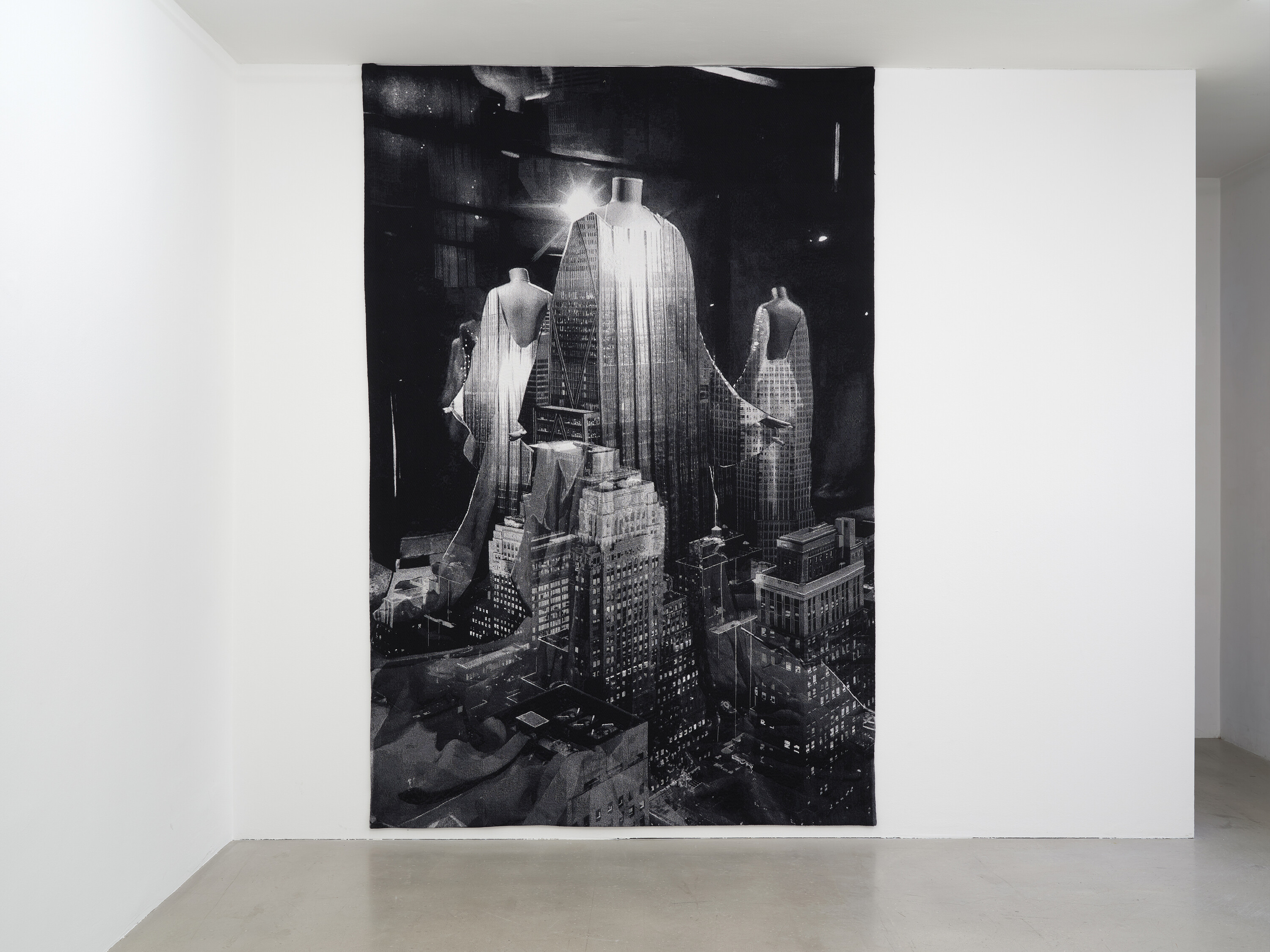
"Schutzmantel Boderline" is the fourth work of Shannon Bool's "Borderline" series which began in 2020. It creates a fascinating dialogue between real and illusionist architecture, body and space. The motif was digitally generated on the computer and then programmed for the hi-tech Jacquard loom which combines flat and high reliefs, combined with additional colored hand embroidery in the artist's studio. The digital collage combines a photograph of the Dior Design exhibition "Dior in Denver" at the Denver Art Museum in 2018 with urban views of the architecture in Manhattan, New York. Shannon Bool arranges the modernist minimalist figurines, which themselves are already a surrogate of the female body, to a new projection screen by collaging the architecture "inside" their silhouettes. There is a true "collapse" between real and fictional space, between the body of the viewer and this "new" bodily space woven as Jacquard tapestry. Depending on the individual perspective the "image" dissolves itself like a Pointillist Painting to single "dots" and the pure texture of the textile yarn.
Shannon Bool, born 1972 in Canada, lives and works in Germany since 2001. Currently her work is on view in the group exhibition “Skyscrapers by the Roots. Reflections on Late Modernism”, MAC – Musée d’art contemporain, Montréal, CA, “General Conditions”, The School I Jack Shainman Gallery, Kinderhook, NY, US and at “In anderen Händen. Highlights of the Philara Collection”, Miettinen Collection, Berlin. Her works are part of renowned museum collections such as Museum of Contemporary Photography Chicago, Kunstmuseum Bonn, Metropolitan Museum New York, Museum für Moderne Kunst Frankfurt, Musée d´Art Contemporain de Montréal, Lenbachhaus Munich or The National Gallery of Canada. She currently produces a site specific art piece for the new building of the Opera in Cologne. Recent solo exhibitions were dedicated to her at the Kunstmuseum Krefeld, Museum of Contemporary Photography, Chicago (both 2023), Agnes Etherington Art Centre, Kingston (2020), the Kunstverein Braunschweig, Centre Culturel Canadien in Paris (both 2019) or Musée Joliette Canada (2018). She has participated at numerous internationally renowned group exhibitions such as „Räume Hautnah“, Draiflessen Collection, Mettingen, DE (2024), “Infinite Regress: Mystical Abstraction from the Permanent Collection and Beyond”, Kemper Museum of Contemporary Art, Kansas and “Dreams of an Owl, Who the Bær and the Wounded Planet. Stories from the collection of the Kunsthalle Bielefeld and an intervention by Simon Fujiwara”, Kunsthalle Bielefeld, Bielefeld, DE, “Pop and Politics in Contemporary Textile Art”, Kunstmuseum Ravensburg & Kunstssammlungen Chemnitz (2022/21), „INTERTWINGLED – The Role of the Rug in Arts, Crafts and Design“, Galleria Nazionale d‘Arte Moderna e Contemporanea, Rome, „Dip in the past“, Lehnbachhaus, Munich (both 2022), „Now or Never“, Kunstmuseum Stuttgart (2021), „In the Picture: Overpainted Photography“ at Sprengel Museum Hannover, 2019, “Black and White and Everything In Between: A Monochrome Journey”, Vancouver Art Gallery, Vancouver, CA (2024), „Le Grand Balcon“ La Biennale de Montréal or „Im Herzen wild. Sammlung+“, Kunstmuseum Mülheim an der Ruhr (2024).
